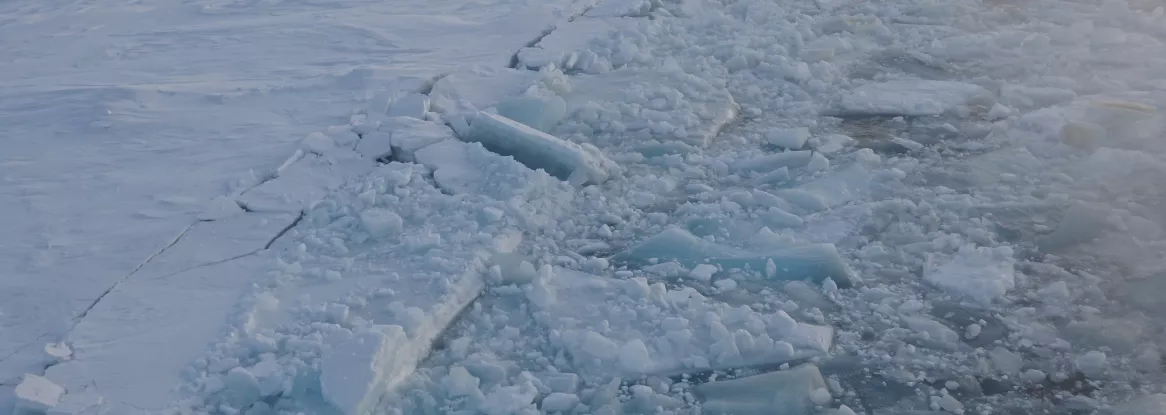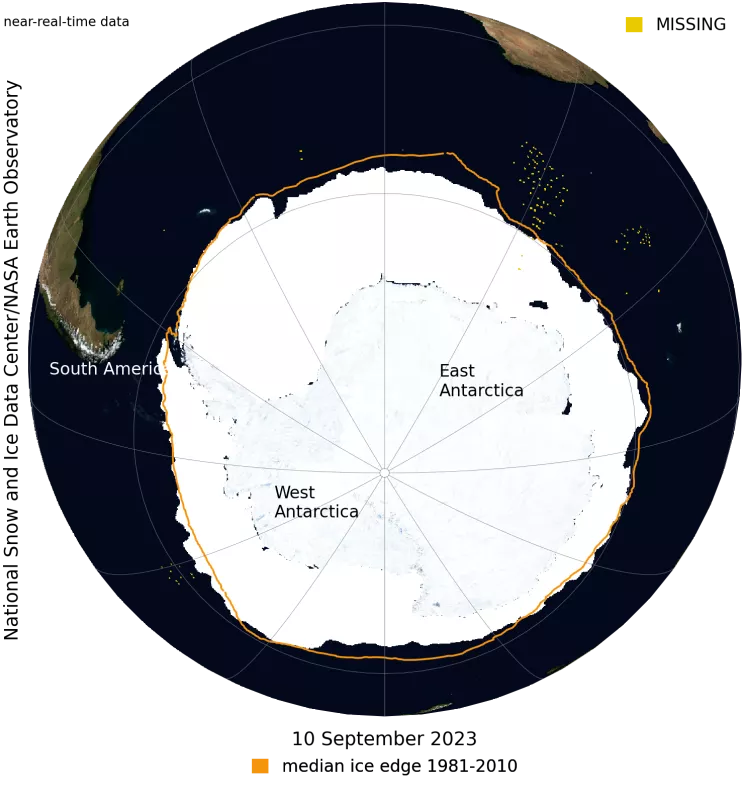Antarctic sea ice has likely reached its maximum extent for the year, at 16.96 million square kilometers (6.55 million square miles) on September 10, according to scientists at the National Snow and Ice Data Center (NSIDC) at the University of Colorado Boulder. The 2023 maximum is the lowest in the 45-year satellite record. It is more than one million square kilometers (386,000 square miles) below the previous record low maximum extent, set in 1986.
NSIDC scientists stress that the Antarctic sea ice extent number is preliminary—continued winter conditions could still push the ice extent higher. NSIDC will issue a formal announcement at the beginning of October with a full analysis of the possible causes behind this year’s ice conditions, interesting aspects of the growth season, the setup going into the summer melt season, and graphics comparing this year to the long-term record.
Read the NSIDC Sea Ice Today page for more details and images.
Read the NASA feature here.
NSIDC is part of the Cooperative Institute for Research in Environmental Sciences (CIRES) at the University of Colorado Boulder. NSIDC Sea Ice Today is supported in part by NASA.

